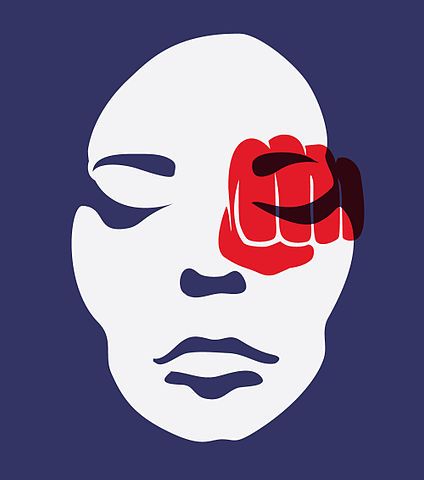why we shouldn’t forget that women are capable of abusing women too
*TW: Discussion of domestic violence*
Domestic violence is a horrific epidemic. One in three women experience a form of domestic violence from the age of 15, and almost two Australian women are killed by partner abuse each week. Persistent gender inequalities continue to run rampant in our society. This can be seen in double-fold: the vast majority of perpetrators are men, and when there is a male victim, they are often too ashamed to speak out.
When you look closely, there are many other societal issues highlighted by the plague of domestic violence. These statistics are echoed in the LGBT community, with one in three homosexual, bisexual, transgender and intersex people experiencing domestic violence. Although there is limited Australian data on the topic, overseas studies suggest that up to 75% of people in the LGBT community may have been affected by domestic violence. Despite this alarming statistic, there is a dire lack of dialogue in comparison to domestic violence in heterosexual relationships.
In heterosexual relationships, emerging evidence points to the issue of male victims facing barriers to support due to societal perceptions on gender roles. This results in male victims ‘hiding in shame, fearful of being ridiculed or even prosecuted’. Although statistics are exceedingly affected by underreporting, in 2010 the US Centre released a report that found ‘the rates of men being forced to penetrate women over the previous year were identical to the rates of women reporting being raped.’ Meanwhile, the prevalence of these crimes over a lifetime was estimated to be 4.8% for men and 17.8% for women. While the rate of male victims is nowhere near the number of females, I do find lack of serious acknowledgement towards women being capable of abuse damaging in many regards. The first is that this results in a lack of resources set up specifically for men, including those in the LGBT community. The second is that these gender assumptions overlap into lesbian relationships, resulting in an extreme shroud of silence.
It is important to note that this is tricky territory. Male perpetrators often claim themselves as a victim after their female partner acts in self-protection or retaliation for the violence. This needs to be acknowledged because it stands as a huge issue for women experiencing domestic violence by men. It buys into the manipulation of the legal system by male perpetrators in maintaining a huge amount of control. To dismiss the fact that our society is still constructed in patriarchal hierarchy, as shown by the overwhelming stats, will be overlooking ingrained cultural issues of exploitation and inequality.
But we cannot let ourselves fall into a black and white picture of domestic violence. This silence towards female perpetrators has manifested into a tenacious myth that domestic violence cannot occur in lesbian relationships, acting as a societal blindside that isolates victims and perpetuates ignorance. There is sturdy disbelief in society that females can commit sexual violence due to social construction that views us as nurturing, passive and dependent. The suppression towards this subject is preserving a society where traditional gender roles are reinforced and everyone outside the binary becomes collateral damage.
When combined with these problems, the influence of identity is particularly lethal within lesbian relationships. The already existent stigma, process of being “out” and homophobia makes experiences of abuse even more isolating. As said by Richard Carroll, professor and psychologist, ‘Domestic violence is exacerbated because same-sex couples are dealing with the additional stress of being a sexual minority.’ As LGBT communities are still fighting for legitimisation, this makes it less likely that victims will want to disclose their sexuality to authorities or show disunity.
Without formal resources clarifying that this behaviour is wrong, or even exists, it is much harder for lesbian victims of domestic violence to reach out. There are unique aspects to LGBT partner abuse, and without proper awareness, these can be easily overlooked. This includes having the abusive partner use the threat of “outing” to maintain control. A second factor is that domestic violence may be more readily accepted due to an internalisation of homophobia, which is when victims blame their sexuality for the abuse.
Women as victims of domestic violence are proportionately larger compared to men, and that raises a multitude of issues. It indicates the high level of exploitation and gender disparity that continues to manifest within our society. But the assumption that women are incapable of abuse remains as a primary barrier for victims in seeking help. This inflexible framing is a disservice to equality as a whole, as well as the LGBT community. The silence surrounding domestic abuse in lesbian relationships exemplifies this fact, with the continual reinforcement of gender overshadowing victims on the binary.
If you are a victim of domestic violence, or know someone who is, you can call the National Domestic Violence Helpline on 1800 RESPECT.



Pingback: Why We Shouldn’t Forget that Women are Capable of Abuse too | little liberosis